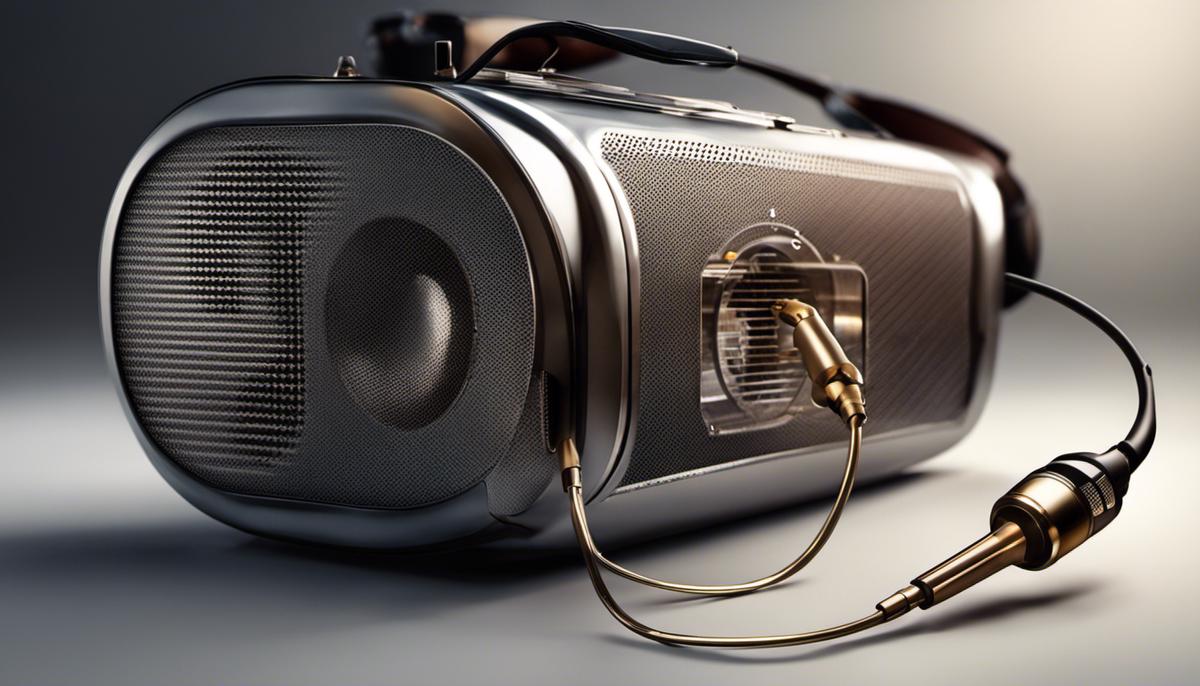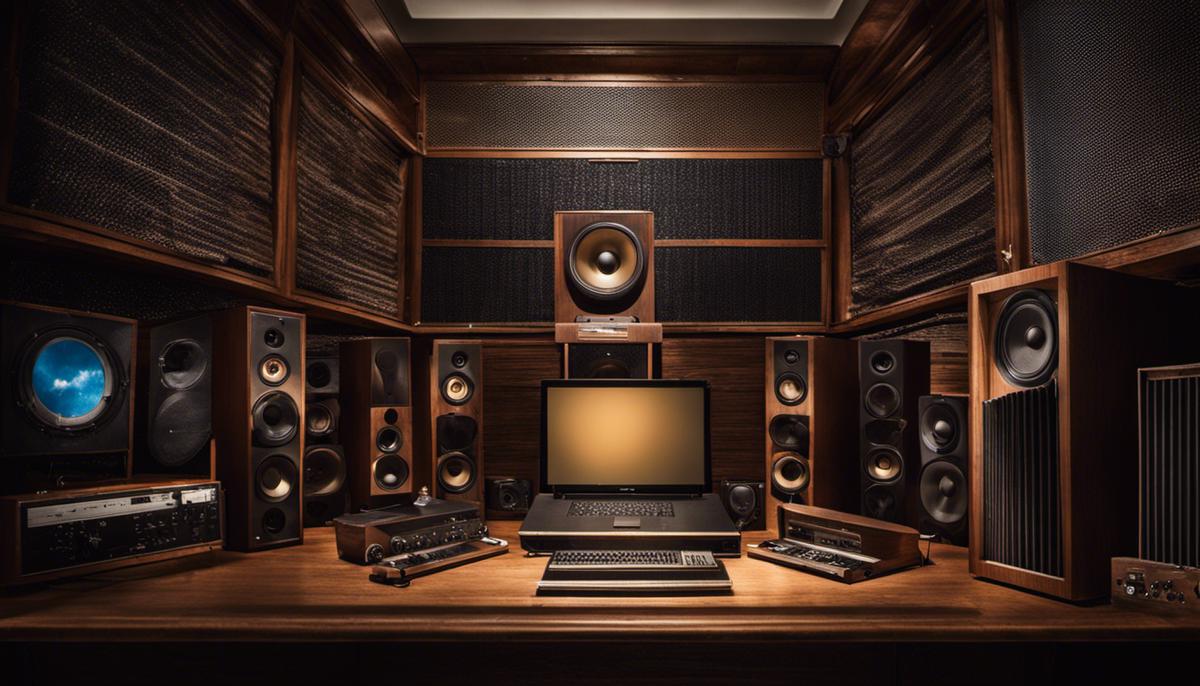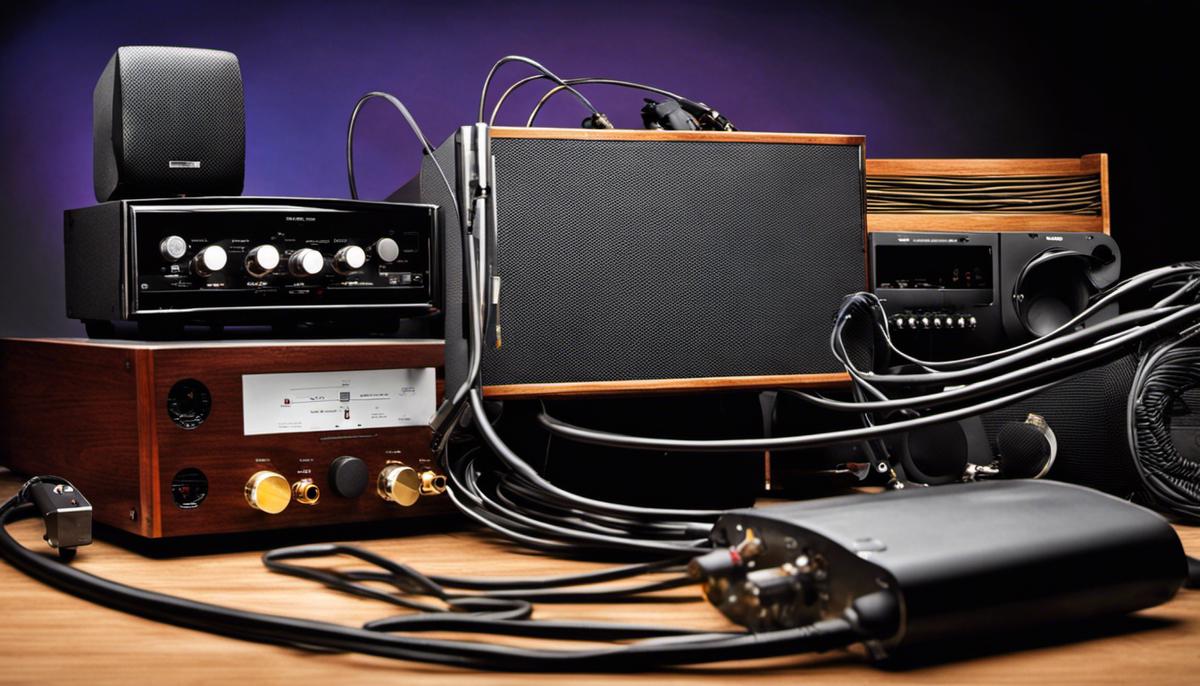Sound is one of the purest forms of expression, creating an emotional rapport unlike any other medium. But when audio artifacts like crackling and popping occur in digital recordings, they can disrupt this bond with a jarring effect. These artifacts, or distortions, can be a result of myriad factors like issues with the audio equipment, connection problems, or inadequate sound recording environments. This piece aims at equipping you with a deep understanding of these audio artifacts, identifying their common sources and providing effective solutions to these problems, thereby helping you to hone your skills in producing pristine digital recordings.
Understanding Audio Artifacts
Dude, turning a deep dive into the gnarly world of sonic waves, we’re riding the big one, man. Essentially paddling through the authentic realm that lies between real and digital, today’s wave is all about audio artifacts. Now, no need to scrounge around the sands for these artifacts, dude, these ain’t no ancient relics but groovy nuisances that pop-up in your pristine digital ocean of sound.
Audio artifacts, man – they ain’t a psychedelic trip to the past. Nah, they are those gnarly gremlins that rock up when you least expect it, like a wipeout at the end of a sublime wave. Gnarly man! They create that distortion, that buzz, that click, or that digital disruption that throws the beat out of balance.
And how do they crash your perfect sonic surf session? Well, like a sneaky rogue wave, man! These artifacts often arise from a crazy process called Quantization. To get your bodacious beats from the analog to the digital realm, they gotta be chopped up into samples. Now, this ain’t a perfect art form, bro, and sometimes these samples create unintentional harmonics or distortion. Basically, pace yourself, remember, the surfer who rides every wave inevitably wipes out!
What else gnarly can happen? Well, your data rates, dude! If your data rates are too low, here comes that rogue wave! Low bit depths or low sample rates can make your mix sound like you recorded in an echo chamber during a seismic wave! It’s all those high frequencies bouncing around like they’ve had too much to drink. Hang loose, amigo.
Not to forget, one of the most unexpected artifacts comes from poor old Lossy compression, you know, like MP3. You lose some info here, pals, and when you unpack it, poof! The sound just ain’t the same.
And the mother of all wipeouts, the Digital Clipping. This happens when your levels hit red, and the sound gets chopped off, like a gnarly shark attack on your perfect wave, leaving behind rough edges that screech like alley cats on hot tin roofs.
Don’t get bummed out though dudes and dudettes, ‘cos it ain’t all bad news. Surf’s still up! Some audio artifacts could be your ride to creating something unique, the way vinyl pops and scratches added to the vibe of yesteryears. Just like a mysterious undercurrent, they add that element of surprise, the raw, corked edge in this digital ocean.
So fearless surfers, next time you’re cruisin’ through the big digital sea of sound, keep your ear to the ocean floor for these audio artifacts. Because knowing a rogue wave from a riptide could be the diff between catching the ride of your life or wiping out. Surf’s up, amigos! Keep it real in the digital realm.
Stay stoked, stay surfing, and peace out!

Identifying Common Sources of Audio Artifacts
Riding the Perfect Wave: Identifying Common Audio Artifacts in Your Digital Recordings
Duudes and dudettes of the digital do-re-mi domain, it’s time to tackle the gnarly bit – audio artifacts. Sure, they can add like, an unbelievable radicalness to your sound, but they can also be a total wipeout, man. So, gear up! This ain’t no gnarly wave; it’s a groovy guide to identifying these bad boys in your own digital recordings.
First on the lineup? Background noise. Gotta remember, every surf session isn’t just you and your hang ten hollerin’ high above the whitecaps. Rather like that obnoxious seagull who’s always after your sandwich, background noise can sneak into your recordings. Find it, tame it – gotta be one step ahead of the game, man!
Second head baffler is, like, intermittent noise. Think of it as the pesky jellyfish that interrupts your pristine surf. This oddly intermittent hiss or pop usually comes from some faulty gear, bad cable connection, or when that vintage 1959 Les Paul guitar gets a little too close to your computer. Handling this means isolating the source – a crucial step in wiping out intermittent noise.
Gnarliest of all, jitter interference. Dude, this isn’t, like, the natural seaside vibrations that help you catch that killer wave. It’s more like the tide pulling back without giving you a chance. Jitter – it scrambles your digital audio by messing with the timing, and can cause some far-out distortions. Keep your cool, though. It’s often dealt with at the source level or using high quality audio interfaces and converters.
Oh, and those pompous, unwanted echoes? Yeah, they’re like that kook who drops in on your wave. So uncool, man! Echoes, or late reflections, they normally come from poor room acoustics or faulty digital delay devices. Use absorption materials and consider a high-quality digital reverberator, ’cause nobody wants a drop in!
And the dropouts, man? Ephemeral yet annoying, like seaweed wrapped ’round your ankle. It appears as a sudden, brief loss of signal in your digital audio. Check your DAW – could be overloading the processor or hard drive.
Last up, phase anomalies. Kinda like eerie dead zones in the ocean where nothing seems to move, this can happen when the same sound arrives at the mic from different directions. Your sweet harmony suddenly becomes a chaotic cacophony. Avoid it by placing your mics strategically.
So, bottom line surfers? Same as it is in the ocean. Respect your surroundings, get to know them inside and out, and take control. Ride your audio waves with the same effortless grace as you would the crystal clear Pacific. The sonic sphere is yours to conquer, cats, so go nail that perfect sound wave!

Implementing Solutions to Audio Artifact Problems
Dude, it’s like being in the gnarliest wave of epic sound when you find yourself embedded within the glistening vortex of digital audio. But, just like when you wipe out at the worst possible moment, audio artifacts can suddenly turn that ride from unbelievably rad to disastrously lame. So, here we are, set to navigate the rad journey of ways to fix audio artifacts in your thrilling ride through sonic waveforms.
Surf’s up, let’s paddle into the wild ocean of “background noise” in digital recordings. It’s like that irritating dude who always drops in on your wave, killing the vibe. Fortunately, solutions exist, man! Things like noise reduction tools, high-quality cables, and better recording environments, they’re like the magic wax for noiseless surf, keeping unnecessary noise out.
Next up, we’re talking “intermittent noise”. Dude, it’s like that rogue wave that shows up uninvited. This can be fixed in the mixing and mastering stage with noise-removal tools dude, like dynamic equalizer plugins, or spectral repair tools. They tame these rogue waves perfectly.
And who can ignore that notorious party-crasher “jitter interference”? It’s like that unsteady wave that unsettles you. Jitter can be reduced by using higher quality clock sources and digital audio cables, thereby ensuring a way smoother ride.
Now, about those stubborn “echoes and late reflections.” It’s like you’re constantly trying to outrun your own surf, which we all know can be real trouble, bro. Digital reverb plugins, parametric equalizers, or Convolution Reverb tools to the rescue! They indeed master the echoes letting you surf your sound waves without trailing shadows.
Suddenly found yourself facing “dropouts”? Total wipeout, bro! Good news, better buffer settings and updating your audio drivers are like EPIC lifeguards on duty. They can save your session from the ferocious wipeout of dropout blunders.
Finally, the big kahuna, “phase anomalies”, the kind of curl that can send you from riding high to eating sand. Using phase correction tools or plugins can be just the benevolent wind you need, allowing you to course-correct and get back to conquering those sonic waves.
So, there you have it, bro, a few solid tips to keep the stoke high, the wipeouts low, and ensure your audio artifacts are as nonexistent as bad vibes at a beach bonfire! Now, out in the rad world of digital audios, ride those sound waves like the champ you are! Hang loose, bro.

As we’ve explored, audio artifacts like crackling and popping can seriously degrade the sound quality in our digital recordings. Yet, once we understand their origins, they become less of a daunting adversary. By acknowledging the importance of the quality of our audio equipment, given vigilance to connection issues, and maintaining a conducive sound recording environment, we are already on the path to successful mitigation. Implementing the solutions and tools discussed previously, you’ll be well-equipped to navigate your way around these artifacts, transform the quality of your recordings, and move confidently in your journey of expression through sound. After all, it’s the quintessential clarity that enhances the listener’s experience, making your audio recordings a true feast for the ears.

Comments.
Currently there are no comments related to this article. You have a special honor to be the first commenter. Thanks!